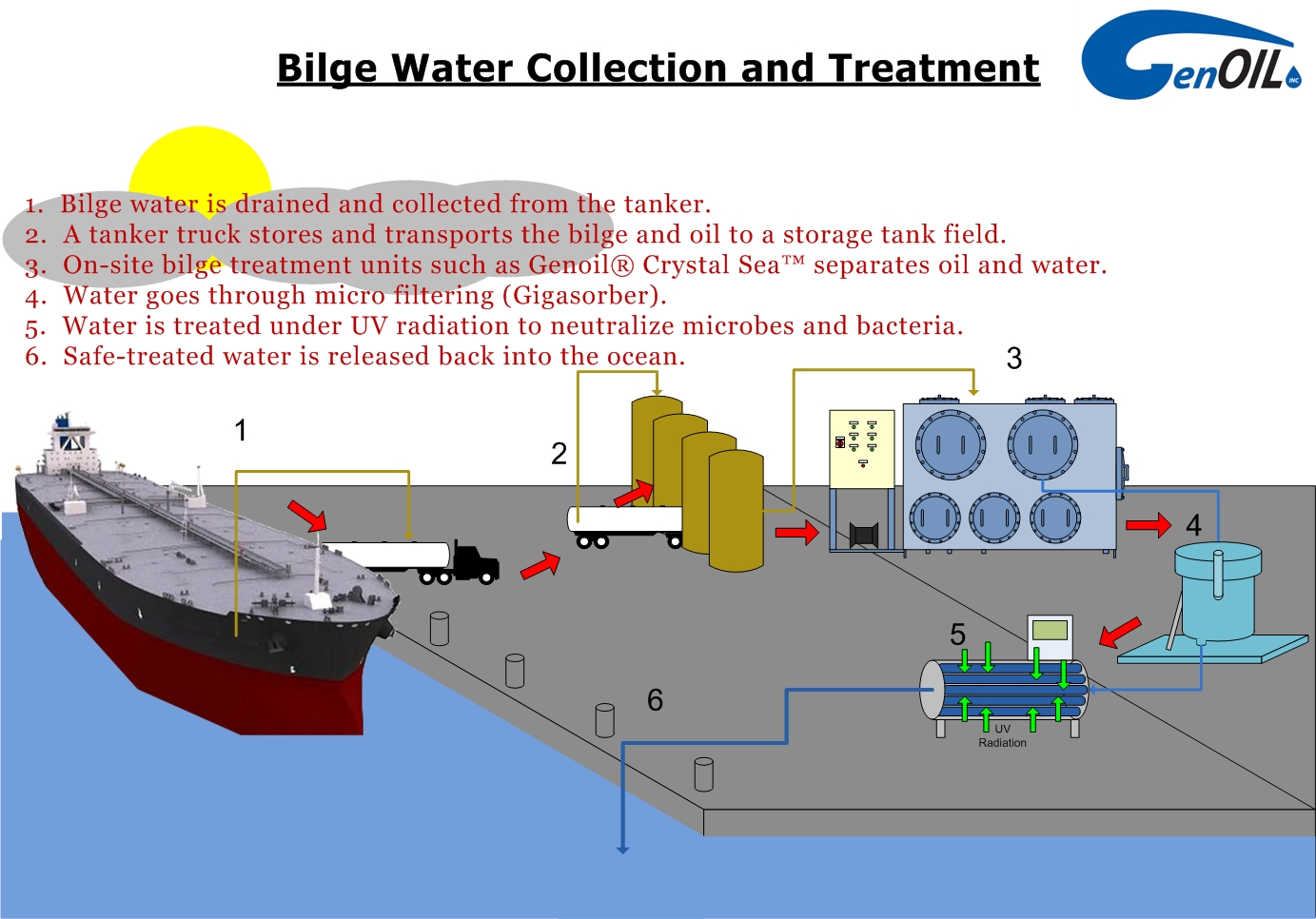Each year, ports around the world spend millions of dollars on the mitigation pollution. As a result, various states and countries have been researching methods for handling pollution from ships in an effort to eliminate the potentially harmful effects to the environment. As a result of the threats and associated cost of polution, The Genoil Enviromnemtal Project Team is working together to evaluate different collection and onshore treatment alternatives. Other states and countries are performing similar evaluations, but the majority of those evaluations have focused on bilge water treatment that is on board the ship itself.

The overall objectives of the project are:
- Pollution prevention that not only pays for itself, but generates profits.
- Treatment is to be centralized, there will be one treatment system for the port as opposed to each ship that enters the port having its own dockside treatment system.
- The discharge from our system exceeds Coast Guard regulations of 15 ppm.
- The overall goal for The Genoil Environmental Team is to drastically improve the environment of the port. It must be affordable, profitable, effective, and able to be implemented.
To understand how to achieve the objectives for this project, we must first understand the traffic patterns at the port (Genoil’s CEO has 40 years of logistics background). In addition, any onshore bilge water collection and treatment system would need to satisfy certain design criteria while avoiding any design constraints. Genoil has overcome these challenges. Genoil understands the requirements and constraints as related to:
- The port.
- Ship design.
- Flows and volumes for collection and treatment.

A couple different ways the bilge water can be collected from the ship:
- Having a machine establish the connection between the ship and collection system.
- Creating a direct on-board connection between the ship’s existing pipes and pumps and onshore or on-barge pumps.
- A collection pumping system is needed to pump the water from the bilge to a transport system, such as a barge, truck or pipe.
The Genoil system includes two portable pumps, serving the ships from the docks or a barge. One pump would be used to collect the bilge water so that it can be transported to a storage or treatment facility, and the other pump provides redundancy.
The primary alternatives that were considered for transporting the bilge water included piping the bilge water to its destination, or collecting and transferring the bilge water in a truck, or barge. The individual capacity of a typical waste hauling truck is 5,000 gallons. Therefore, up to 5 truckloads would be needed to collect bilge water from on board the vessel. Obviously depending on how full the 23,000 gallon bilge is. It takes approximately one to two hours for a single truck to collect the bilge water, transport it to a nearby location for treatment, and then the truck returns for an additional load of bilge water. There are advantages to transporting the bilge water by truck in that there is no capital cost for implementing this transport option and trucking can accommodate any amount of bilge water.
Genoil can also install this plant on a barge. A barge that is about 1.7 million gallons would be adequate. One barge or two smaller barges would be needed to collect bilge water. This would allow the bilge water to be collected within the design time constraint of two hours.

The great advantage of using a barge for transporting the bilge water is that it is efficient to travel around the port via the waterways around it, and the barge can serve as a mobile storage or treatment facility if desired. Only one barge would be needed to transport the design volume of bilge water but additional barges could be purchased if a larger volume of water needed treatment or storage. In addition, the barge has sufficient capacity to store the bilge water once it is collected, and the barge could be designed to include the bilge water treatment processes on-board.
Genoil will be responsible for financing, building and installing the water treatment plant in a designated port. The company will also operate service, maintain and supervise the plant with a local workforce.
Please drop an email to: Sales@genoil.net for more information.
